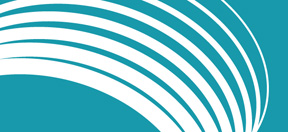You Are Here: U.S. Preventive Services Task Force > Focus on Special Populations > Focus on Children and Adolescents
USPSTF: Focus on Children and Adolescents
The U.S. Preventive Services Task Force (USPSTF) is committed to improving the health of America's children and adolescents. To achieve this, the USPSTF makes evidence-based recommendations for children and adolescents, develops new approaches to assess evidence on child health, and convenes a workgroup dedicated to child health.
Contents
What is the U.S. Preventive Services Task Force?
What is the USPSTF Child Health Workgroup and What Does It Do?
How Does the USPSTF Review Evidence on Child and Adolescent Health?
USPSTF Recommendations for Children and Adolescents
Opportunities to Comment on USPSTF Draft Recommendations for Children and Adolescents
Tools for Using the USPSTF Recommendations for Children and Adolescents
What is the U.S. Preventive Services Task Force?
The USPSTF is an independent panel of experts in prevention and primary care that evaluates available evidence and makes recommendations about clinical preventive services, including screenings, counseling, and preventive medications. The Task Force determines whether or not the evidence supports providing a clinical preventive service in primary care settings to people without symptoms. For a service to be recommended, the evidence must show that the potential benefits of providing that service outweigh the potential harms.
Select to learn more about the USPSTF.
Select to learn more about how the USPSTF reviews and rates evidence.
Some recommendations made by the Task Force apply to people in specific age groups. The Task Force, therefore, includes members with expertise related to different stages of life. USPSTF membership includes pediatricians, family physicians, and nurse practitioners who specialize in the care of children and adolescents. In addition, the Task Force seeks advice from major professional societies focused on child health, including the American Academy of Pediatrics, the American Academy of Family Physicians, and the National Association of Pediatric Nurse Practitioners. The USPSTF also convenes a Child Health Workgroup to address the specific health needs of children and adolescents.
What is the USPSTF Child Health Workgroup and What Does It Do?
The health needs of children and adolescents differ from those of adults. In particular, preventive health care for children must consider the "sensitive" windows during which the course of growth and development may be influenced, and the long span of time over which health outcomes will be affected.
Based on these special considerations, the USPSTF formed a workgroup dedicated to child and adolescent health. Members of the Child Health Workgroup include pediatricians, family physicians, nurse practitioners, and experts in child development. They provide specialized knowledge to inform the work of the USPSTF and develop new methods and procedures to be used in making recommendations for children and adolescents.
Activities of the Child Health Workgroup include:
- Developing a new child health-specific road map for determining what evidence to include and exclude. This road map is called an analytic framework.
- Highlighting topics for which evidence is missing or weak to identify key areas for additional research.
Select for a list of current USPSTF Child Health Workgroup members.
How Does the USPSTF Review Evidence on Child and Adolescent Health?
The USPSTF considers evidence from many types of studies when making a recommendation. These include randomized controlled trials and other types of experimental designs, quasi-experimental trials, and observational studies such as case-control and cohort studies. The Task Force reviews and rates the evidence and applies specific quality criteria to determine whether evidence from each study reviewed can be used in making a recommendation.
The Child Health Workgroup also has developed an analytic framework that is specific to the needs of child and adolescent health topics and that considers developmental pathways and trends. The Task Force uses the framework to guide the search for and evaluation of evidence on child and adolescent health topics.
Historically, there has been limited evidence of good quality about the benefits and harms of preventive services for children and adolescents. The USPSTF is interested in stimulating new research to fill gaps in current knowledge. This evidence is essential in making recommendations about the clinical preventive services that should—or should not—be provided to healthy children and adolescents as part of routine primary care.
USPSTF Recommendations for Children and Adolescents
Select for USPSTF Recommendations for Children and Adolescents.
Opportunities to Comment on USPSTF Draft Recommendations for Children and Adolescents
The USPSTF invites public comment on all draft recommendations before they are published. The USPSTF is taking this step as part of its ongoing effort to keep its work and methods clear to the public it serves. To read and comment on USPSTF draft recommendations for children and adolescents, go to http://www.uspreventiveservicestaskforce.org/tfcomment.htm.
If you would like to be notified when new USPSTF draft recommendations are available for comment, please join the USPTF Prevention E-mail List at http://www.uspreventiveservicestaskforce.org/tfsublist.htm.
Tools for Using the USPSTF Recommendations for Children and Adolescents
Based on recommendations from the USPSTF, these tools are designed to help primary care clinicians access information at the point of care.
Pocket Guide to Clinical Preventive Services, 2010-2011
Electronic Preventive Services Selector (ePSS)
Current as of February 2011
Internet Citation:
USPSTF: Focus on Children and Adolescents. U.S. Preventive Services Task Force. February 2011. http://www.uspreventiveservicestaskforce.org/tfchfocus.htm
